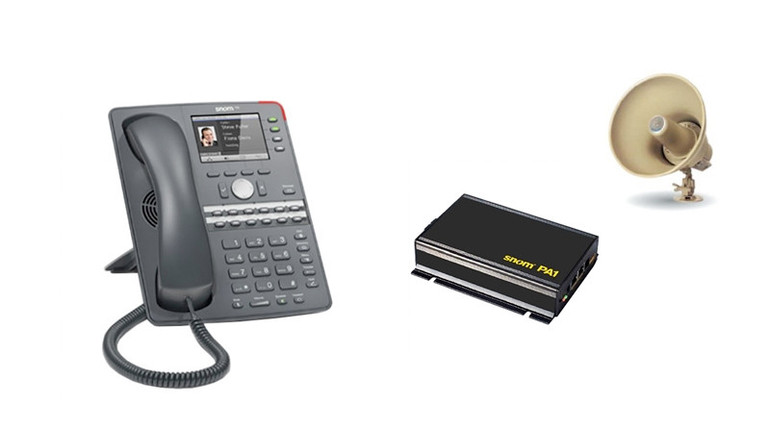A review of 24V and 70V analog paging systems.
Analog paging systems like the ones offered by Bogen, require speakers, amplifiers and a telephone access module to act as an interface with the phone system. These systems can be configured to run on either 24-volt or 70-volt power. Both of these power capacities are low to ensure little energy is lost as electricity runs through the system. In other words, electricity causes heat and energy is lost through heat, and that’s very bad for any system made of long wired connections.
The different 24-volt and 70-volt capacities introduce their own variances to how a paging system is deployed. Both types of paging systems use the same elements, but they are configured entirely differently.
In this blog, we’ll look at the differences between 24-volt and 70-volt paging systems and how each type of system can benefit your business.

70V Paging System
A 70-volt paging system is commonly referred to as central-amplified. One amplifier receives the signal, then “amplifies” it to a number of speakers connected to the same wire. The pros and cons of this system revolve around that 70-volt connection. The arrows in the image above follow the signal from its origin to where it is communicated by the speaker.
Ideal Uses:
A wide frequency response means this system is ideal for more than just voice. This includes music or other audio such as a loud ringer.
Benefits:
Less Cabling
A 70-volt system can send one signal across a single pair of wires farther than a 24-volt system. Multiple speakers can attach to this single pair.
Extra Peripherals
Most central-amplified systems also provide more interfaces for additional microphones, intercoms and other equipment.
Disadvantages:
Not for use near phone lines. The strong signal from a 70-volt system can potentially crossover to an analog phone line and interfere with the signal, meaning separate paths need to be provided for the paging system.
Not cost-effective for a smaller paging system. Powerful paging systems are more costly and will not be used to their full potential on only a few speakers.

24V Paging System
A 24-volt paging system is typically deployed where a 70-volt paging system is not practical. These systems are commonly referred to as self-amplified paging systems because the speakers have their own amplifiers with their own power supplies. In the image above, for example, this speaker would have its own amplifier, which is why additional power is being pumped to it.
Ideal Uses:
A narrow frequency response means this system is meant for voice communications. More dynamic tones, such as music, would not have as much clarity.
Benefits:
No Interference
Unlike 70-volt systems, a 24-volt system can send and receive signals without disrupting nearby analog wiring. In fact, some 24-volt paging systems can even run on the same cable as an analog telephone.
Less is More
For optimal use, self-amplified systems use, on average, only six speakers or four horns (horns are louder and use more power). This smaller setup is more cost-efficient on self-amplified systems, whereas on central-amplified systems a lot of power would be lost and the equipment would not be used to its full potential
Disadvantages:
Because 24-volt paging systems require a separate power supply to each speaker, they require twice as much cabling. One power supply might be able to power multiple speakers, but these speakers will still require two pairs of wires—one from the signal’s source and one from the power supply. The 70-volt systems, on the other hand, require a single pair of wires from the amplifier and no additional power supplies.
Most 24-volt paging systems cannot support additional interfaces or inputs. Connecting another microphone to the system, for example, would not be feasible.
For a more dynamic paging system, use both a self-amplified system and a central-amplified system. The self-amplified system can take over in more remote areas that a central-amplified system cannot reach. Both forms of paging systems can work in tandem, rather than opposed to each other.

